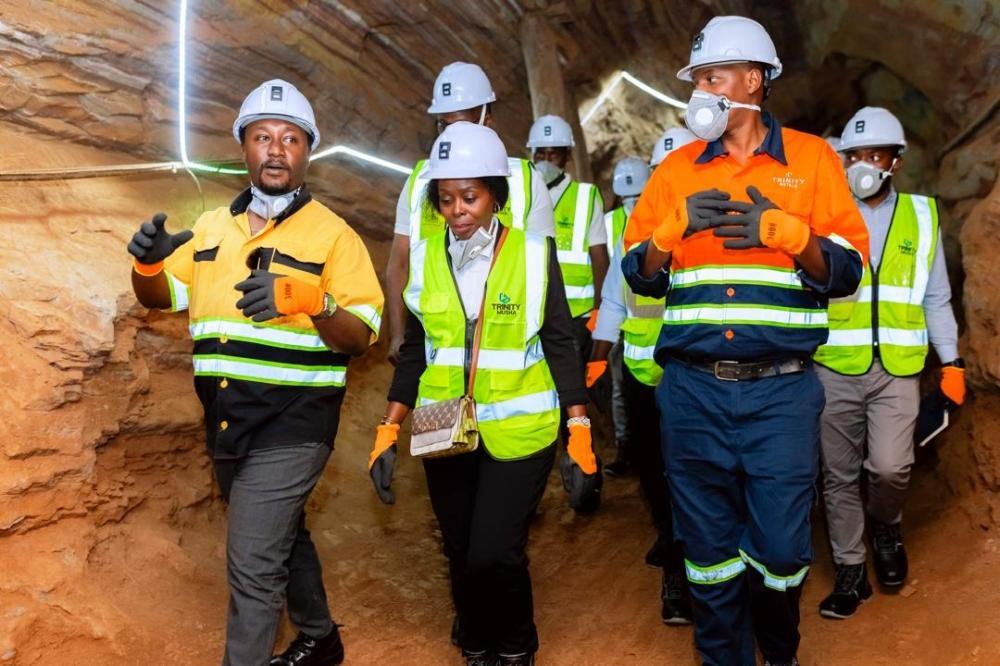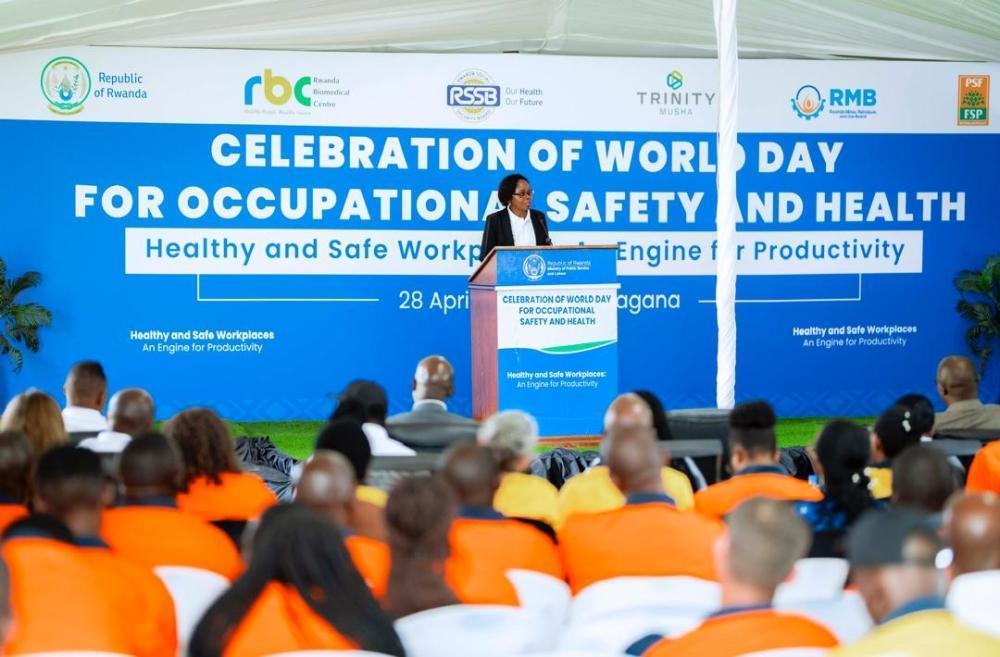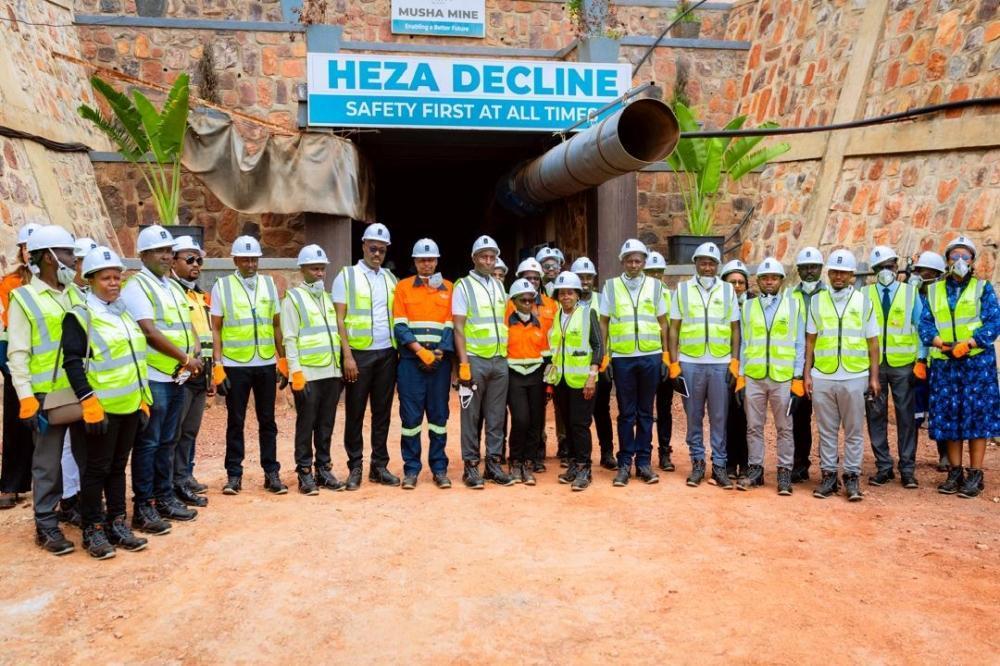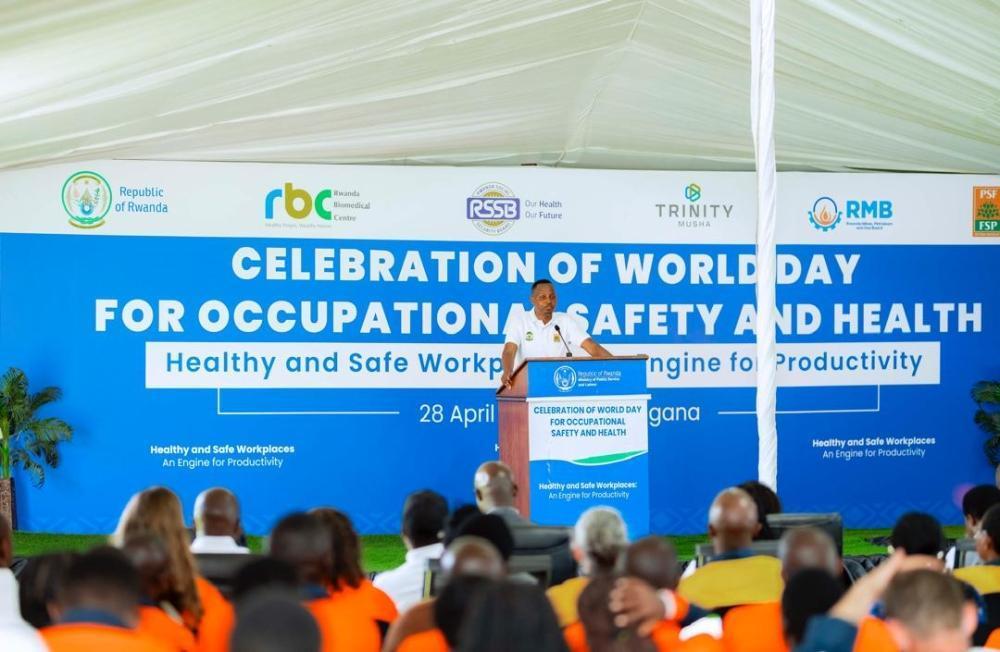Africa-Press – Rwanda. The Minister of Public Service and Labour, Ambassador Christine Nkulikiyinka, has urged for continued vigilance in promoting occupational safety.
Speaking during the national celebration of the World Day for Occupational Safety and Health held at Trinity Metals’ Musha Mines in Rwamagana District on Monday, April 28, the minister underscored the vital connection between safe workplaces and sustainable economic growth.
The event was organized under the theme, “Healthy and Safe Workplaces: An Engine for Productivity,” reinforcing Rwanda’s commitment to creating over 1.2 million decent and safe jobs.
The minister highlighted the mining sector’s role as a driver of economic growth, noting that it employed more than 76,000 people in 2024.
Despite these achievements, Nkulikiyinka reminded stakeholders that the challenges remain significant.
Rwanda Social Security Board (RSSB) says that 7,955 cases of occupational accidents and diseases were reported in the 2023/2024 fiscal year.
The International Labour Organization (ILO) estimates that about 395 million occupational accidents and diseases globally each year.
The Minister emphasized that compliance with occupational health and safety standards must remain a strategic pillar in Rwanda’s development journey, particularly under the National Strategy for Transformation (NST2), which aims to create 250,000 productive jobs annually.
“The importance of upholding occupational health and safety standards remains paramount,” Nkulikiyinka said.
“Workers must be provided with written contracts, registered with the Rwanda Social Security Board, receive wages through accredited financial institutions, and work in environments free from child labour and exploitation. These measures are essential for building a resilient and equitable economic growth and working environment.”
Recent labour inspection data supports a narrative of steady improvement in workplace conditions.
In 2021/2022, the national compliance rate with decent work standards was 67.5 per cent, while compliance with occupational health and safety stood at 45.5 per cent. In 2022/2023, these figures rose to 72 per cent and 52.2 per cent, respectively.
In 2023/2024, compliance rates further increased to 72.7 per cent for decent work and 59.9 per cent for occupational health and safety.
These positive trends reflect the impact of collaborative efforts between government bodies, employers, and development partners.
At the Musha mine, management has implemented a variety of safety measures, including the provision of protective gear such as helmets, steel-toe boots, high-visibility clothing, earmuffs, flashlights, and knee pads.
These tools not only enhance physical protection but also contribute to psychological confidence and job satisfaction among workers.
“I feel safer and more confident,” said miner Hypolite Shema. “Wearing this protective gear helps ensure I return home healthy, and it eases financial burdens that might arise from injuries.”
Jean-Claude Ntirenganya Bahati, the health and safety officer at Musha mine, explained the mine’s protocols.
“Before workers enter the tunnels, we conduct a risk assessment and coordinate closely with team leaders. This pre-emptive approach has significantly reduced both fatalities and injuries,” he said.
In the past seven years, the proportion of workers with formal employment contracts at Musha mining increased from 5 to 34 per cent, demonstrating progress in efforts to formalize employment and improve working conditions.
According to miners, the importance of sustained efforts in workplace safety has helped them enhance their livelihoods. Jeannette Uwimana, a mother of four from Musha Sector, Rwamagana District, has worked in mining concessions for the past five years.
“I managed to buy a cow, secure health insurance, and contribute Rwf 5,000 weekly to community savings clusters in my village,” she said.
Minister Nkulikiyinka reiterated that proactive prevention of workplace risks and robust support mechanisms in case of accidents are essential for the continued progress of Rwanda’s workforce.
“Work remains the key driver in lifting our citizens out of poverty,” the minister said, citing recent data from the National Institute of Statistics of Rwanda, which recorded a significant decline in the national poverty rate from 39.8 per cent in 2017 to 27.4 per cent in 2024.
Amb Nkulikiyinka emphasised on compliance with occupational health and safety standards noting that it is a strategic pillar that will foster Rwanda’s National Strategy for Transformation (NST2), which aims.
For More News And Analysis About Rwanda Follow Africa-Press










